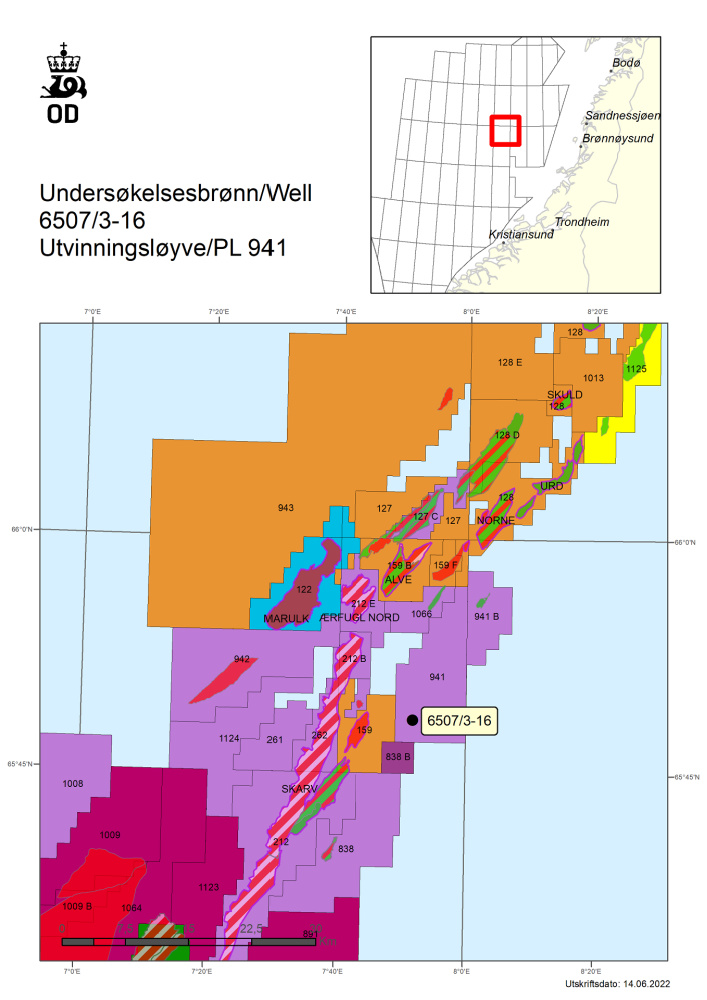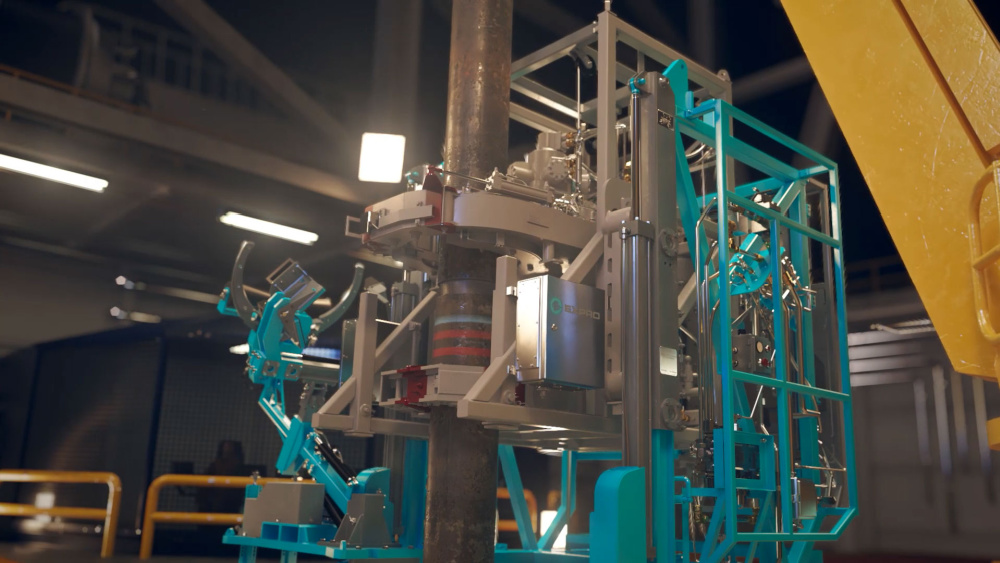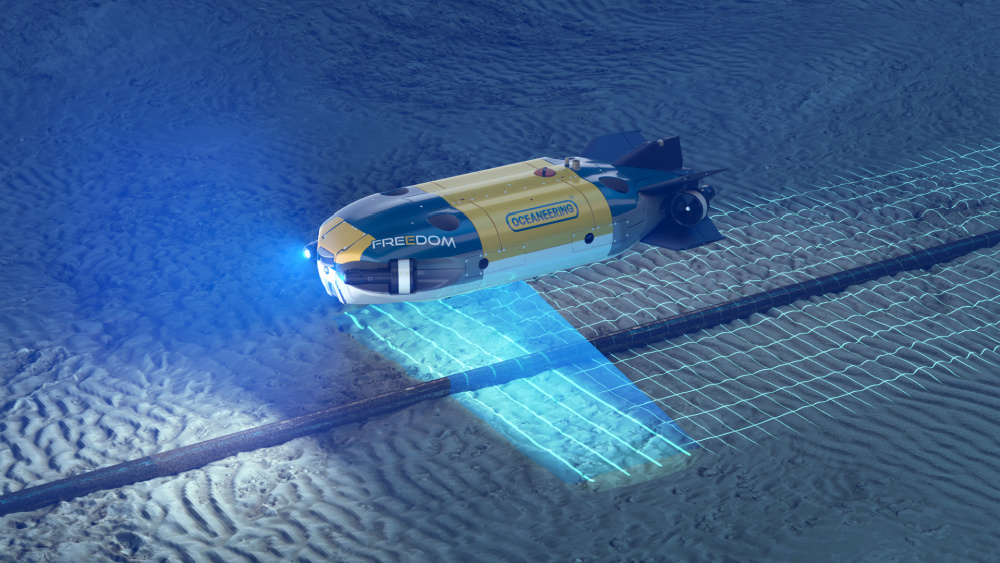From a Frade resuming production to the award of decommissioning work in Thailand and other contracts being let, below is a compilation of the latest headlines in the E&P space within the past week.
Activity headlines
Frade back online
Petro Rio announced on Aug. 25 that production had resumed at the Frade field offshore Brazil.
On Aug. 15 Petro Rio announced it was shutting in production at Frade due to a malfunction in the FPSO’s inert gas line.
Engineering study planned for UK’s P2607 field
Hartshead and Shell have reached an agreement to conduct an engineering study for the preferred offtake route and agreed tie-in option for the Phase I gas field development of the P2607 license offshore the U.K.
The offtake route is via a tie-in to Shell’s Southern North Sea infrastructure for transportation to Bacton for onshore processing and delivery to the U.K Gas National Transmission System Petrofac will conduct the engineering study and will provide a basis for design and cost estimate for the preferred gas offtake route for the tie-in of Hartshead facilities and the required brownfield facility modifications as part of the gas offtake route for the Anning and Somerville gas fields.
Dry well near Skarv in Norwegian Sea
The Norwegian Petroleum Directorate (NPD) reported that Aker BP’s wildcat well 6507/3-16 in production license 941 in the Norwegian Sea was dry, although it encountered sandstone layers with good reservoir quality.
The well, drilled about 12 km northeast of the Skarv Field in the Norwegian Sea in 374 m water depth, was permanently plugged and abandoned after data acquisition was carried out.
The primary exploration target in the Lower Jurassic and Upper Triassic (the Båt Group and Grey Beds) encountered sandstone layers totaling about 200 m with good reservoir quality. The preliminary interpretation is that this is part of the Båt Group in the Lower Jurassic and Grey Beds in the Upper Triassic.
About 2-3 m of sandstone was encountered in the secondary exploration target in the Paleocene (Tang Formation).
Well 6507/3-16 was drilled to a vertical depth of 2205 m below sea level and was terminated in the Grey Beds from the Triassic.
Deepsea Nordkapp drilled well 6507/3-16; it will next drill Aker BP’s 6507/5-A-3 AH production well on the Skarv field in the Norwegian Sea.

FAR ups stake in The Gambia blocks
FAR announced it has obtained the outstanding 50% interest in The Gambia Blocks A2 and A5, giving the company 100% working interest in the blocks. Previously, Petronas subsidiary PC Gambia Ltd. held the other 50% interest.
FAR is seeking partners to fund the exploration program, although the company said that through the purchase, the commitment to drill an exploration well during the next two-year contract term, which begins in October, had been removed. FAR has opened a data room about the blocks for potential partners.
According to FAR, laboratory analysis suggests positive implications for the Panthera Prospect directly up-dip of Bambo-1. Oil shows were detected during drilling of the Bambo-1 well and the subsequent sidetrack well Bambo-1ST1, the company said.
Other news
Shell Gains Access to PGS Multiclient Data Library
PGS announced it has entered into a multiyear agreement that gives Shell access to a significant part of PGS’ multiclient data library.
PGS said its multiclient library will play an important part in supporting Shell’s near-term exploration strategy.
Over the last two years, PGS has developed and invested in a strategic cloud-based solution architecture that can serve multiclient subsurface data to clients. This capability, enabling enterprise access, will improve exploration workflows for energy companies and accelerate their strategic decisions, PGS said.
ANP places 218 blocks on permanent offer
Brazil’s National Agency of Petroleum, Natural Gas and Biofuels (ANP) has approved including 218 blocks from the Brazilian Equatorial Margin (MEQ) in the Permanent Concession Offer (OPC), adding 90,321 sq km to the area offered by the OPC.
With this approval, the ANP increases the number of blocks under study in the Brazilian Equatorial Margin by around 300%, jumping from 71 to 289 exploratory blocks.
Included are all five of the MEQ basins—Foz do Amazonas, Pará-Maranhão, Barreirinhas, Ceará and Potiguar—including deepwater and ultradeepwater acreage.
The region is analogous to recent discoveries of oil and natural gas made in neighboring Guyana and Suriname, as well as in the basins of the African Conjugate Margin.
Now, the 218 blocks await an Environmental Opinion and Joint Manifestation from the Ministries of Mines and Energy (MME) and the Environment (MMA) to be included in the notice for the Permanent Concession Offer.
Brazil’s permanent offer is the main form of bidding for areas for exploration and production of oil and natural gas in Brazil. In this format, there is a continuous supply of exploratory blocks and areas with marginal accumulations located in onshore and offshore basins.
NPD releases geochemical data
The NPD announced it has made available geochemical data from 59,922 samples in 345 wells in the Norwegian and Barents Seas. The NPD acquired the database from IGI Itd, and it contains data from wells released up to the end of 2019. An update this fall is expected with data from all released wells, the NPD said.
According to the NPD, different types of geochemical data are collected when wells are drilled, such as vitrinite reflectance data, RockEval, isotopes and chromatography.
The database is available via the NPD’s factpages.
The NPD said access to a quality-secured database gives all the players on the Norwegian continental shelf a foundation for conducting geochemical evaluations to better understand the petroleum systems.
Expro’s iTONG helps reduce tubular operations emissions
Expro announced its iTONG single push button tubular make-up solution has completed 22 jobs in North Sea field trials, making up over 1,600 connections in the process.
According to Expro, the system could save an estimated 50 hours of rig time per year, which would equate to nearly $2 million annually and reduced emissions due to the need for fewer personnel handling tubing operations.
The iTONG system allows the operator to control, execute, verify, and validate every connection make-up via a tablet or their control chair. It ensures joints of casing and tubing can be made to a specific torque, or broken out in an automated sequence, with the single push of a button.
Additionally, iTONG can be coupled with Expro’s iCAM torque-turn tubular connection make-up system, which uses artificial intelligence to help determine whether the make-up has been successful.
Jeremy Angelle, Expro’s Vice President for Well Construction, said iTONG marks a key step toward fully autonomous tubular running.
“Digital solutions are increasingly being deployed to enhance operations, improve reliability for well integrity, and reduce personnel on the rig floor, which is resulting in improved safety and efficiency, with lower operational costs across the industry,” he said in a press release.

Freedom AUV Achieves TRL 6 For Pipeline Inspection
Oceaneering announced its Freedom AUV is now at Technology Readiness Level 6 on a 1-9 scale following a testing and qualification program assessed by an expert industry group with representation from TotalEnergies, Chevron, and Equinor.
Freedom, a hybrid AUV/ROV system, results from a long-term collaborative relationship of Oceaneering, TotalEnergies and Chevron stretching back to 2014, with Equinor joining the collaboration in 2019.
The goal was to optimize pipeline inspection from an AUV.
Freedom has demonstrated that it can carry out low-altitude inspection and survey on pipelines of different diameters. The vehicle can track pipelines at between 3-5 m altitude from the seabed, providing high resolution survey data and at 8 m altitude for reconnaissance and seabed mapping.
Freedom’s control software includes specific behaviors to locate and maximize data acquisition
value for burial, crossing and freespan events.
Freedom includes obstacle detection, autonomous obstacle avoidance, and general situational awareness. These features allow the vehicle to re-plan its route to avoid detected objects and then to re-engage with the pipeline being tracked once the vehicle has navigated safely past the object.
The initial configuration of Freedom for pipeline Inspection includes outfitting with high specification instruments such as Inertial Navigation System, Laser Scanning System as well as Multibeam Sonar technology to take advantage of Freedom’s unprecedented pipeline tracking ability and proximity to the pipe.

Schlumberger seismic data now part of Versal
CGG, PGS and TGS announced that Schlumberger has become a part of Versal, which is a unified, independent, secure, cloud-based multiclient seismic data ecosystem that allows energy companies to access all their data and entitlements in one place.
Dechun Lin, executive vice president of Earth data at CGG, said Versal now gives “clients streamlined access to four of the industry’s largest multiclient data libraries.”
The addition increases Versal’s coverage to the majority of the world’s multiclient seismic data.
CGG, PGS and TGS created Versal in 2020 and launched it in 2021 to provide a vendor-neutral, single point of access to the largest multiclient data libraries with enhanced efficiency and usability.
Oceannering picks HUVR platform
Oceaneering announced it will use the Inspection Data Management Software (IDMS) platform provided by Austin, Texas-based software firm HUVRdata (HUVR).
HUVR’s cloud-based IDMS platform is mobile-connected, flexible, scalable and vendor-agnostic. Its capabilities support automated inspection data collection and analysis from a variety of sources in the field, enabling data-driven risk mitigation and reduction of the total cost of asset ownership.
HUVR noted that Oceaneering has also joined 34 other companies in the HUVR Partner Network, which is dedicated to creating a streamlined and simple experience for industrial asset owners and inspection service providers.

ABS updates guide for greener operations
ABS announced it has launched detailed requirements for greener offshore operations in what the organization called the first sustainability guide to target the offshore industry.
The updated ABS Guide for Sustainability Notations addresses topside functions on offshore assets such as emissions and discharge based on feedback from ABS clients including Exxon Mobil, SBM and MODEC.
The guide outlines how carbon reduction technologies such as zero-flaring and zero-methane slip policies can enable assets to receive the SUSTAIN-2 notation. The ABS-classed Liza Unity FPSO for Exxon Mobil in Guyana was the first FPSO that ABS awarded the SUSTAIN-1 notation.
Helix wins decommissioning work in Thailand
Helix Robotics Solutions, the robotics division of Helix Energy Solutions Group Inc., announced it has won a 180-day firm-plus-options contract from a Thailand contractor to perform decommissioning services using the subsea construction vessel Grand Canyon II.
Work scope includes DP3 vessel services, crane support and ROV services in connection with subsea well abandonment and decommissioning operations in multiple Thailand offshore fields. Work is scheduled to begin late in the fourth quarter 2022.
The Grand Canyon II is a DP3 multi-role construction support vessel equipped with a 250 MT AHC subsea crane, moonpool, two 3,000 m rated 250 hp UHD ROVs, integrated ROV deck space and removable bulwarks.
Recently, Helix and Volstad Maritime AS announced five-year charter extensions for both the Grand Canyon II and Grand Canyon III construction support vessels to continue working on projects across multiple energy sectors. The Grand Canyon II has been under long-term charter with Helix since 2015, and the new five-year charter extension runs from January 2023 through the end of 2027. The extended charter for the Grand Canyon III runs from May 2023 through May 2028, with a further option to extend.
Under the extensions, Volstad has committed to upgrade both vessels with a new battery hybrid in an effort to reduce fuel consumption and emissions and to improve the environmental footprint of vessel operations.
BGP buys more OBNs
CGG announced that Sercel has sold a second batch of 12,000 GPR300 nodes to BGP Inc., following their earlier order of 18,000 GPR300 nodes in 2021, for deployment on a project in the Middle East.
Now deploying a total of 30,000 GPR300 nodes, the operation is considered the largest seabed seismic exploration project to date.

Trendsetter wins well kill equipment contract
Trendsetter Engineering announced a major oil and gas operator has contracted the company to provide its Relief Well Injection Spool (RWIS) Suite of well kill equipment for an upcoming exploration well drilling campaign in the Eastern Mediterranean. The contract continues coverage for the operator as they move into a different region with similar well conditions.
The RWIS Suite, co-developed by Trendsetter Engineering and Addenergy, facilitates high rate kill requirements through a single relief well. The RWIS suite of hardware is placed on the seabed below the BOPs of a primary and secondary Relief Well Drilling Rig. In the event of a loss of well containment, this equipment is called upon to assist with dynamic kill operations via a single relief well.
The system allows for the supply of high mud pumping rates via a single relief well intercept that would otherwise require two or more relief wells minimum to achieve. As a result, the RWIS can typically allow for drilling of prolific reservoirs that previously challenged the ability to provide a single relief well contingency.
GATE to manage Salamanca commissioning in GoM
GATE Energy announced it won the contract for commissioning management and execution for LLOG's Salamanca development in the deepwater Gulf of Mexico (GoM).
Scope includes pre-commissioning and commissioning planning and execution at both the onshore fabrication site and offshore. The GATE commissioning team will also support initial startup activities offshore.
The Salamanca floating production system will be located in Keathley Canyon Block 689 and tap into the Leon and Castile discoveries. The platform will sit in 6,400 ft, and produce 60,000 bbl/d of oil, 25,000 bbl/d of water, and 40 MMcf/d of natural gas.
AIS to roll out digital twin services in Mexico
Asset Information Services announced it had pushed forward with approved plans to roll out digital twin services to a national oil company (NOC) and the broader supply chain in Mexico. According to AIS, digitization of the NOC’s asset suite is resulting in cost savings and facilitating remote work across the region.
AIS has also delivered five digital twin models to a global international oil company in Latin America, enabling improvements in remote planning, turnaround preparation and planning, and other critical processes.
Drilling simulation kit installed in training center
World-leading provider of advanced drilling simulation technology, Drilling Systems, part of the 3t Energy Group, has delivered a bespoke well control training lab to Western Texas College (WTC) with the installation of simulators.

Equipment included in the WTC training center are one DrillSIM:Educator; an interactive touch screen; display screens with advanced 3D surface and 3D downhole graphics; an instructor station with dual 19-inch monitors and fly-around joystick; 10 DrillSIM:5 simulators; one DrillSIM:20 Mobile Drilling & Well Control Simulator; one DrillSIM Virtual Reality Headset and rig orientation software; one DrillSIM:5000 with specially designed Academic CyberChair; and software providing full 3D visualization of the rig and downhole environment.
Drilling Systems installed simulation technology in well control education at WTC’s Opportunity Center, allowing students to use the interactive virtual environment onsite during in-person classes taught by IADC-certified instructors.
Recommended Reading
EIA: NatGas Storage Withdrawal Eclipses 300 Bcf
2025-01-30 - The U.S. Energy Information Administration’s storage report failed to lift natural gas prices, which have spent the week on a downturn.
EIA: NatGas Storage Plunges, Prices Soar
2025-01-16 - Frigid weather and jumping LNG demand have pushed natural gas above $4/MMBtu.
EIA Reports Larger-Than-Expected NatGas Withdrawal, Again
2025-02-20 - The storage drop failed to offset warmer forecasts, as natural gas prices dipped following a three-week rally.
EIA Reports Big NatGas Withdrawal, as Expected
2025-02-27 - According to the EIA’s weekly storage report, natural gas levels are 238 Bcf below the five-year average and 561 Bcf below the level from the same time last year.
Pipeline Maintenance Drives Waha Negative, Again
2025-03-20 - Analysts predict plenty of natural gas demand on the Gulf Coast is coming as LNG operations ramp up.
Comments
Add new comment
This conversation is moderated according to Hart Energy community rules. Please read the rules before joining the discussion. If you’re experiencing any technical problems, please contact our customer care team.






